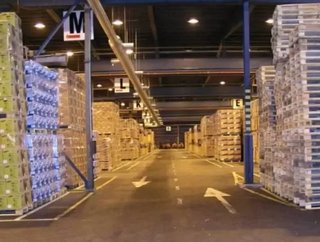Make logistical property choices in the Supply Chain

At BNP Paribas Real Estate, we work closely with the investment community to track the trends in capital values and rental values of property in the logistics sector. Our annual Index exposes market conditions that could have a major impact on supply chain network decisions made by strategists in the retail, manufacturing and distribution sectors.
For many years we have noticed that there is a lack of definition when it comes to tracking the investment performance of warehousing units. The terms logistics, industrial or distribution are all used almost interchangeably to mean the same things, whereas in actual fact they can mean very different things.
For accuracy, we break this property market down into two main areas within our Index – ‘logistics’, which examines units of more than 50,000 sq ft leased to a single tenant and ‘industrial’, which examines smaller units traditionally located on industrial estates.
For property investors this allows the performances of an asset to be tracked and benchmarked. For tenants, the information could be used to establish a correct level of rent or to examine the options of owning a unit freehold..
In the early 1990s, logistics began to separate itself in terms of asset performance. This is in line with the evolution of operational logistics and supply chain management, and the creation of national and regional distribution centres. An index with a booming performance in the early 1990s and a stable performance above that of the standard industrial units developed. The Index reached a higher peak in 2006 and over the course of the last four years has set itself apart from standard industrial assets.
Logistics has proven to be a more resilient asset type than all other industrial, as it has emerged more quickly from the recession over the last three years. Logistics as an investable asset started in earnest in the late 1980s with investment volumes steadily rising. As a proportion of capital value of all assets, spending peaked in 1989 with 32% of total value invested in logistics.
In the last 31 years, as a proportion of value, all other industrial spending has only been higher than logistics in five years (1987, 1999, 2002, 2008 and 2009). Net investment in logistics was highest in 2005 with £759 million spent on assets and 2011 saw logistics return to its dominant position with £202 million net invested compared to £83.8 million for all other industrial.
Once again the bulk of large deals have involved retailers, specifically within the grocery sector. Interestingly, 2012 saw the automotive sector and associated supply chain move into the foreground, certainly in the Midlands and the North East. However, with the majority of requirements satisfied for the short-term, it is not expected that the sector will challenge retail in terms of market dominance in the medium to long-term.
The results of the 2012 Index exposed market conditions that could have a major impact on the supply chain network decisions made by strategists in the retail, manufacturing and distribution sectors. The results also highlight issues which should make firms operating in the regions outside London and the South East give serious thought to altering their asset strategies. As a sluggish economy forces firms to continue to look at their costs, any opportunity to further sweat their assets should be explored
The Index also demonstrated that capital values are falling in the most part for both logistics and industrial assets. This could have an important impact in the supply chain as companies look to maximise value and make savings. Strategic locations that were previously unaffordable are now available. Therefore, for cash rich tenants the time may be right to examine purchasing the freeholds to warehouses, where possible and therefore future proof their supply chains by placing strategic assets on their balance sheets.”
About the Author
Lisa Fitch’s expertise covers all areas impacting supply chain performance, including inventory, procurement, manufacturing, logistics, warehousing and organisational excellence.






